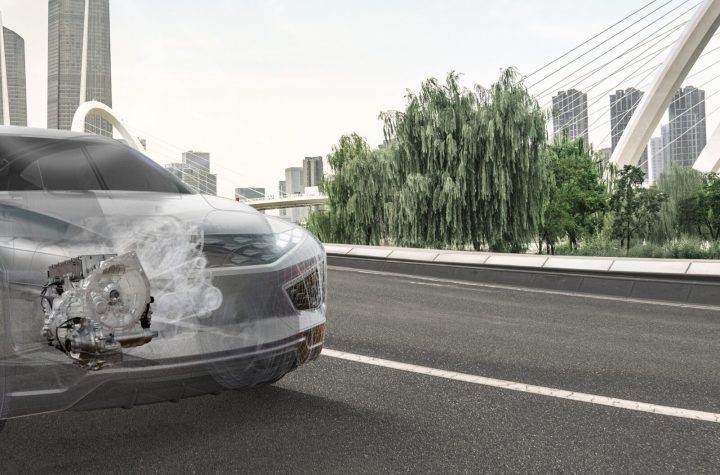
Following the visit of President Bush to the California Fuel Cell Partnership (CAFCP) two weeks ago, DaimlerChrysler has completed the first portion of the $88 million Department of Energy Hydrogen Learning Demonstration Program by delivering on a 30 fuel cell vehicle commitment. The project takes fuel cell technology out of the hands of engineers and puts it into the hands of customers.
The CAFCP becomes the 17th United States customer for a DaimlerChrysler fuel cell vehicle. Through daily operation, the employees of the CAFCP will log miles on the zero-emissions F-Cell, providing valuable data for future vehicle design. The dry climate of Sacramento in Northern California is one of three distinct environments that DaimlerChrysler will utilize to test fuel cell vehicle performance.
“It takes cooperation from industries and governments to create viable alternative-fuel solutions,” said Mark Chernoby, Vice President – Advance Vehicle Engineering, Chrysler Group. “We’re pleased to be a driving force in this team effort with the Department of Energy and the California Fuel Cell Partnership to develop zero-emissions transportation.”
DaimlerChrysler has spent more than $1 billion in fuel cell vehicle research and development. No other manufacturer has accumulated more data or driven more zero-emissions miles — more than 1.2 million.
The Mercedes F-Cell is a reflection of DaimlerChrysler’s leadership in fuel cell technology. The entire fuel cell system is housed in the floor of the vehicle, leaving full use of the passenger and cargo spaces. It has a range of approximately 100 miles and a top speed of 85 mph. The electric motor develops 88 hp (65 kw), enabling acceleration from 0 to 60 mph in 16 seconds. The stack has been developed by the DaimlerChrysler cooperation partner, Ballard Power Systems.
The DaimlerChrysler fuel cell vehicle fleet is diverse — in addition to several research vehicles, it also includes medium-duty fuel cell Dodge Sprinter vans and more than 35 Mercedes-Benz Citaro fuel cell buses, which operate in Europe, the United States, Japan, Australia and Singapore. As part of the world’s largest fleet of fuel cell vehicles, DaimlerChrysler has more than 25 fuel cell vehicles with customers in California and more than 100 around the world. No other manufacturer comes close to the efforts of DaimlerChrysler with fuel cell technology.
DaimlerChrysler supports Governor Arnold Schwarzenegger’s efforts and goals. The California Hydrogen Highway Network — in addition to other programs the company is involved with, including those with the DOE and the Environmental Protection Agency — enables DaimlerChrysler and its partners to gain extensive operational familiarity with fuel cell vehicles and hydrogen refueling stations.
DaimlerChrysler pioneered fuel cell vehicle technology more than a decade ago. Fuel cells release energy from the reaction of hydrogen with a catalyst and oxygen. This clean technology operates at a high level of efficiency and is true zero-emissions. Hydrogen-powered fuel cell vehicles emit only pure water vapor as exhaust. Fuel cell vehicles are part of DaimlerChrysler’s advanced propulsion technology umbrella, which includes efficient gasoline engines, advanced diesels, Flex-Fuel and hybrid powertrain systems.




















好文!2026年世界杯越来越近了,让我们共同期待这场全球足球盛宴。日期:2025-11-18 06:46:46 (-03)。